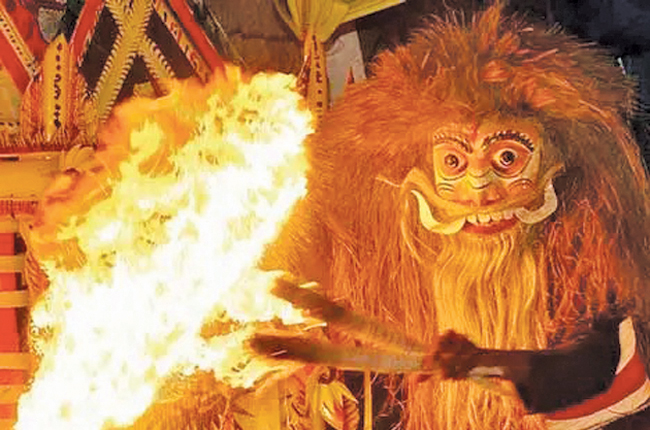‘Thasmahi bhuta nisamaethe sabbe-mettan karotha manusiya pajaya Divacha ratthoca hatanthi yae balin-tasmahi rakkatha appa mattha’
(All spirits listen to this. You should express good will to the human beings. The human beings day and night make offerings to you. Hence protect them without fail)-Rathana Sutra.
It is a well-known fact that the Buddha arrived in Mahiyangana in the South of Sri Lanka and drove away some devils merely by the use of word power. It is also accepted and valued by the Buddhists that the pestilence caused by spirits in the city of Visala, India was completely dispelled by chanting the protective recital the Rathana Sutra and spraying the holy water (Pirith Pan) over the city ground.
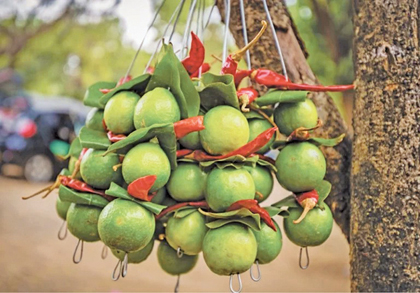 During Buddha’s time, a group of Buddhist monks went to a forest for meditation. But the spirits dwelling upon the tress began to make awful noises and disturbed these priests. They came back and reported the matter to the Buddha. The Buddha taught them to chant the discourse on Universal Love (Metta-Sutra). They returned to the forest and practiced chanting this Sutra and the spirits became pacified. The are several discourses in Buddhism like the discourse on Blessings (Mangala Sutra), discourse for alleviating all care and troubles (Sabbesava-sutta), Atanatiya sutta and the Viajjagpagga sutta which are protective in function.
During Buddha’s time, a group of Buddhist monks went to a forest for meditation. But the spirits dwelling upon the tress began to make awful noises and disturbed these priests. They came back and reported the matter to the Buddha. The Buddha taught them to chant the discourse on Universal Love (Metta-Sutra). They returned to the forest and practiced chanting this Sutra and the spirits became pacified. The are several discourses in Buddhism like the discourse on Blessings (Mangala Sutra), discourse for alleviating all care and troubles (Sabbesava-sutta), Atanatiya sutta and the Viajjagpagga sutta which are protective in function.
The Rathana – Sutta is chanted in times of danger, Disaster, and epidemics. During the Corona virus pandemic the Rathana Sutta was chanted in almost every Buddhist temple in Sri Lanka on a regular basis for a long time period. Even it was transmitted over the electronic medium. A novel special ritual called the Nine Planet Offering (Nava Graha Puja) was initiated at a suburban Buddhist temple by the High priest and there was wide state and community participation.
Spirits (Bhuta)
A Bhuta refers to an element, particularly one of the four material elements; earth, water, fire and wind. It also refers to a kind of vampire spirit or evil ghost. In anthropology, a spirit conveys a different meaning. A spirit is an immaterial nonliving being of fairly independent existence. It may be associated with a particular natural feature. There may be many different kinds of spirits even in one culture. Spirits cannot be perceived directly by our senses. The wind, the sun, a disease, may be regarded as having a spirit or being one. Spirits may be linked with fairies, gnomes, and similar figures. The concept of a soul that can be separated from the body is the model for the nonhuman spirit. The spirit helped the growth of advanced religion by facilitating dualistic conceptions of the material and the immaterial. Usually there are more spirits on the earth than human beings. Many spirits in nonliterate religions worked for man or against hum and their force could be seen in almost any unusual happening.
The notion in some religions that each person enjoys the protection of a guardian angel and faces the snares set by a tempting demon may derive from the belief in spirits. Spirits are sometimes confused with ghosts who loiter around their homes. There are several spirits by name. Great Spirit of the American Indians; familiar spirit, a personal protective spirit; Guardian spirit, a personal protective spirit; household spirit, a supernatural person found near or in dwellings, and water spirit, a god (evil spirit) among the southern Bushmen of South Africa who withholds rain. The viruses, bacteria and some other disease causing organisms could be regarded as spirits as these are not visible to the naked eye. Infectious Viral diseases like Chicken pox and Measles are looked upon as diseases caused by divine beings (deiyange leda) in Sri Lanka. Some mental ailments are said to be caused by the possession of spirits. A large majority of Sri Lankans believe in the evil/poisonous effects of eyes and speech (aes waha, kata vaha) and the evil effects of spirits (bhuta).
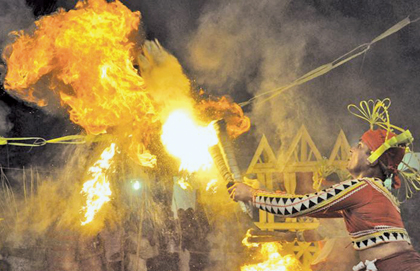 Buddhist texts describe of beings existing in the four hells (Apaya or Kama-dugati or woeful states-planes devoid of happiness) and in the six heavens. In particular the common people believe that hungry ghosts (Peta) and some gods (devas) exert unwholesome effects upon them. The text Petavattu narrates the evil destiny of those reborn as hungry ghosts. The Vimanavattu describes the splendour of the various celestial mansions of the gods and sets out on 83 stories an account of the good moral deeds which led to the gods being reborn on a heavenly paradise.
Buddhist texts describe of beings existing in the four hells (Apaya or Kama-dugati or woeful states-planes devoid of happiness) and in the six heavens. In particular the common people believe that hungry ghosts (Peta) and some gods (devas) exert unwholesome effects upon them. The text Petavattu narrates the evil destiny of those reborn as hungry ghosts. The Vimanavattu describes the splendour of the various celestial mansions of the gods and sets out on 83 stories an account of the good moral deeds which led to the gods being reborn on a heavenly paradise.
Strategic Management
“Aesthetic arts” are products of the aesthetic sense of a people, arts which appeal to the sense of beauty.
The Brahmins believed that the different spirits and deities could be pleased by making offerings to them. In the Vedic society various types of sacrifices called ‘yaga’ and ‘homa’ were performed in which animals were killed. There were sacrifices where even human beings were killed and fed to the sacred fire-Agni deva or god of fire.
In Sri Lanka, there are several dancing performances to please spirits/devils that cause disease and harm the people.
Riddi Yaga is performed in Sri Lanka, to achieve two objectives to protect pregnant mothers by preventing abortions ensuring safe delivery of infants; and for preventing infertility of married women. Usually this ritual is performed to bless a pregnant mother’s first safe delivery.
According to one Indian legend, in Villodipura a red mountain burst open and from its sparks arose seven queens. These queens happed to be barren caused by the curse of black prince. The fortune tellers advised the queens that they should cultivate cotton and weave a fresh towel and donate it to the Buddha Deepankara as a rainy season retreat offering. Accordingly, the seven queens alighted a ship and came to a place called Usangoda in the south of Sri Lanka, situated near the Walave river. At Usangoda, they cleared a place, grew cotton seeds and harvested cotton flowers and prepared an excellent towel and donated to the Buddha Deepankara. As a result they became pregnant. To commemorate their pregnancy they went to bathe in a nearby waterfall called Abaeana Fall. Unfortunately a low caste person touched them. They were embarrassed and ashamed. So they jumped from the waterfall and sacrificed their lives. Because of their love for their fetus, they were born as Riddi she devils.
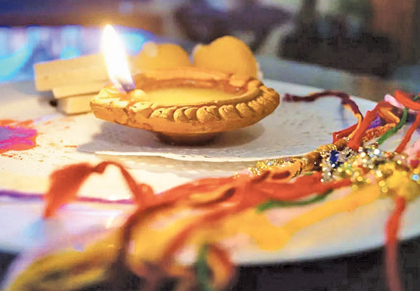 According to another legend the seven Riddi Queens arose from the flames that emerged by the bursting of the Meru mountain.
According to another legend the seven Riddi Queens arose from the flames that emerged by the bursting of the Meru mountain.
The dramatic performances include vivid dancing performances depicting twelve gestures, cotton spinning and a lullaby. The Dolos Paliya includes the gestural performances of the Riddi queens while bathing.
Mask Dancing
Kolam is a masked dance play performed a s a part of a pregnancy rite. According to legend it is ascribed to the craving of a pregnant queen. However, there is no direct connection with sprits for the geneses of doladuka. The villagers perform this ritual, seeking protection from spirits to the entire family or to the entire community.
Often the Kolam dancing ceremony commences with making offerings to the Buddha, Dhamma, Sangha and to the Gods in particular to the Blue God. Often the chief dancer utters sacred hymns inviting God Visnu to the flowers bed.
Masked dances are performed by three types of characters social charters such as the washer woman and her husband, Soldier, police officer, the headman and the aristocract-mudali; the kings court characters like the queen and the king; and demons like the Narasingha, Pancha Nari, Naga Rassa, Gurulu Rassa, Purnaka, Ananga, Bahirava and Gara Yaka.
There is an interesting legend about Gara Yaka’s birth. Prince Dala was the son of the Indian king Dantha. Dala fell in love with his own sister Giri. He wanted to marry her. The father disallowed this union. The sister was ashamed of it and she went to the forest and hanged herself while the brother Dala starved and became very angry and cruel. He too went to the forest and turned himself to a devil.
Cleaning Efforts
It is believed that women during the first menstrual bleeding and during monthly periods become unclean. A funeral house is also an unclean situation. During such situations there are rituals performed to protect the health of those at risk. In particular the rituals pertaining to the first period are elaborate and include a period of isolation followed by clean medicinal bathing and lighting an oil lamp.
When one is sick of an infectious disease or mentally upset because of spirits, a sacred thread is tied around the neck or the arm of the sick person by a witch doctor in order to drive away the spirits.
This is a very simple cult performed to curb the effects of the evil eye and the evil speech as well as the evil effects of the spirits and planets.
Usually a witch doctor prepares a flower bed by placing seven flowers of different hue and also places seven lime fruits and a sacred thread on it. The he/she starts muttering sacred formulate in front of the victim who remains seated nearby and begins to cut every lime fruit with a nut cracker moving the split lime from the head to foot of the victim, Finally he ties the sacred thread around the victim’s neck or arm and throws the cut limes into a boiling pot of water or oil. This pot is thrown into a brook where other people would not trample the cut limes.
Many Sri Lankans go on pilgrimage to identified Hindu shrines to pay their homage and respects to the gods. Kataragama is a very famous devala. They make offerings and seek heavenly blessings. They also tie a coin and donate money. Seeking blessing is almost a routine practice in case of incurable diseases caused by spirits, a s well as in other risky situations and high expectations. One could see sacred threads or bangles around the wrists of devotees and strings of lime alternating with chillies hanging on vehicles dedicated to the protective devas.
Driving Devils
Some people believe that they are not successful in their life because their dead relations have become haunting spirits who hinder their progress. In order to satisfy them and drive them, they perform quite a number of rituals and there are expert witch doctors that help them.
One such ritual is offering a delicious meal prepared in a fresh clay pot, placed in an empty room and chant religious formulae.
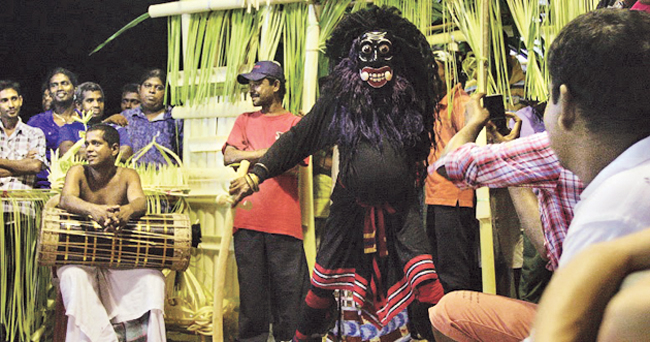
A common ritual is offering alms to seven fertile mothers.
Making a clay idol of the victim and devil dancing is still very popular in this country. In particular, Kohomba Kankariya in the Kandian districts and the Dahaata Sanniya in the low country districts in Sri Lanka are still being performed to drive away spirits. Maha Sohan Samayama, Rata Yakuma, Sanni Yakuma. Huniyan Kappilla and other protective cults to drive away several disease causing spirits are very propular forms of rituals.
Notices and Rituals
It is a common practice to make appealing requests to the spirits by way of notices, advertisements and rituals to protect vulnerable segments of human beings. It is believed that children fall sick because of the evil influence of some spirits. In particular, the evil spirit known as Balagiri often visits rural homes where there are children and the children become sick after their visits. The parents try to mislead Balagiri by displaying a notice board or a written appeal in the front doorway of the house – ‘Balagiri is not today, but tomorrow. In some temples in the North Western Province there are wall paintings or the Balagiri spirit. Sometimes a special ritual is performed to please and pacify the Balagiri spirit. Mohini and Kalu Kumaraya are believed to the imposing evil effects upon the adolescents causing abnormal behaviour. Often a devil ceremony with an image is performed and a talisman is tied around the neck or the arm of the victim. The Bali Tovilaya is quite interesting to watch as it is accompanied with rhythmic drum beating, dancing, sacred formulae chanting, participant chanting and so on.
Many of these rituals are civilized and democratic in nature and are conducted with community participation. Some rituals are aesthetic, esoteric, semiotic and fanciful. Some elaborate and time consuming ones are being discontinued as it is difficult to find performing artists or for economic reasons. Because of globalization, urbanization and technical innovation some of these rituals would become extinct in the future. The art of Puppet dancing in the South of Sri Lanka is facing the risk of its decline. However, there are attempts to promote cultural transmission in Sri Lanka. For instance, chanting protective recitals is widely promoted and practiced. There is always a segment of the population sunk in ignorance and superstition. As long as the public believe in spirits, rituals would continue to flourish. In all rituals there are opportunities to study the semeiotic aspects of a culture as any ritual is a colourful system of signs. Rituals broaden the horizon of semiotic competence.
Dr. Senarath Tennakoon





